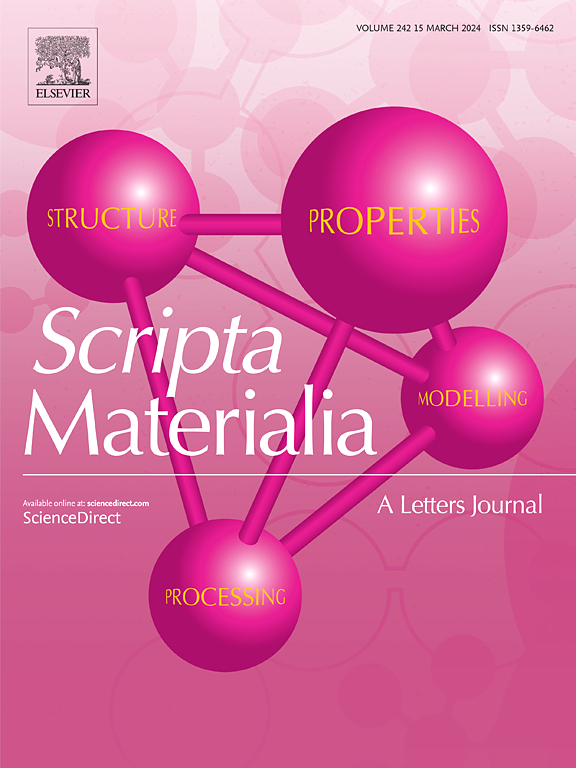用严重晶格畸变的多原理元素合金化提高金属三极管的蓄氦能力
IF 5.6
2区 材料科学
Q2 MATERIALS SCIENCE, MULTIDISCIPLINARY
引用次数: 0
摘要
氦(He)泡诱导的氚保留是影响氚储存材料循环氚储存能力的关键因素,氦保留能力是评价氚综合储存性能的关键指标。采用透射电镜(TEM)和He瞬时释放分数(IRF)技术,系统地研究了Ti20.2Zr16.6Hf18.1Nb45.1多主元素合金(MPEA)三晶和钛三晶中的He气泡生长行为和氦释放特性。结果表明,Ti20.2Zr16.6Hf18.1Nb45.1T111三晶中He泡保持球形生长,而ti1.68三晶中He泡由球形向血小板样转变。Ti20.2Zr16.6Hf18.1Nb45.1T111三聚体的He释放分数比钛三聚体低一个数量级。MPEA的严重晶格畸变有效地延缓了He的迁移和扩散,增加了He气泡的成核密度,显著减缓了气泡的生长。这项研究证实了mpea具有优异的氦保留能力,这表明它们有潜力成为高性能的氚储存材料。本文章由计算机程序翻译,如有差异,请以英文原文为准。

Enhancing the helium retaining ability of metal tritide by multi-principle element alloying with severe lattice distortion
Helium (He) bubble induced tritium retention is a critical factor affecting the cyclic tritium storage capacity of tritium storage materials, with helium retaining ability serving as a key indicator for evaluating comprehensive tritium storage properties. This study systematically investigated He bubble growth behavior and helium release characteristics in Ti20.2Zr16.6Hf18.1Nb45.1 multi-principal element alloy (MPEA) tritide and titanium tritide using transmission electron microscopy (TEM) and He instantaneous release fraction (IRF) techniques. Results reveal that He bubbles maintain spherical growth in Ti20.2Zr16.6Hf18.1Nb45.1T111 tritide, whereas TiT1.68 tritide undergoes a morphological transition from spherical to platelet-like bubbles. The He release fraction of Ti20.2Zr16.6Hf18.1Nb45.1T111 tritide is one order of magnitude lower than that of titanium tritide. The severe lattice distortion of MPEA effectively retards He migration and diffusion increases He bubble nucleation density, and significantly decelerates bubble growth. This study confirms that MPEAs exhibit excellent helium retaining ability, suggesting their potential as high-performance tritium storage materials.
求助全文
通过发布文献求助,成功后即可免费获取论文全文。
去求助
来源期刊

Scripta Materialia
工程技术-材料科学:综合
CiteScore
11.40
自引率
5.00%
发文量
581
审稿时长
34 days
期刊介绍:
Scripta Materialia is a LETTERS journal of Acta Materialia, providing a forum for the rapid publication of short communications on the relationship between the structure and the properties of inorganic materials. The emphasis is on originality rather than incremental research. Short reports on the development of materials with novel or substantially improved properties are also welcomed. Emphasis is on either the functional or mechanical behavior of metals, ceramics and semiconductors at all length scales.
 求助内容:
求助内容: 应助结果提醒方式:
应助结果提醒方式:


